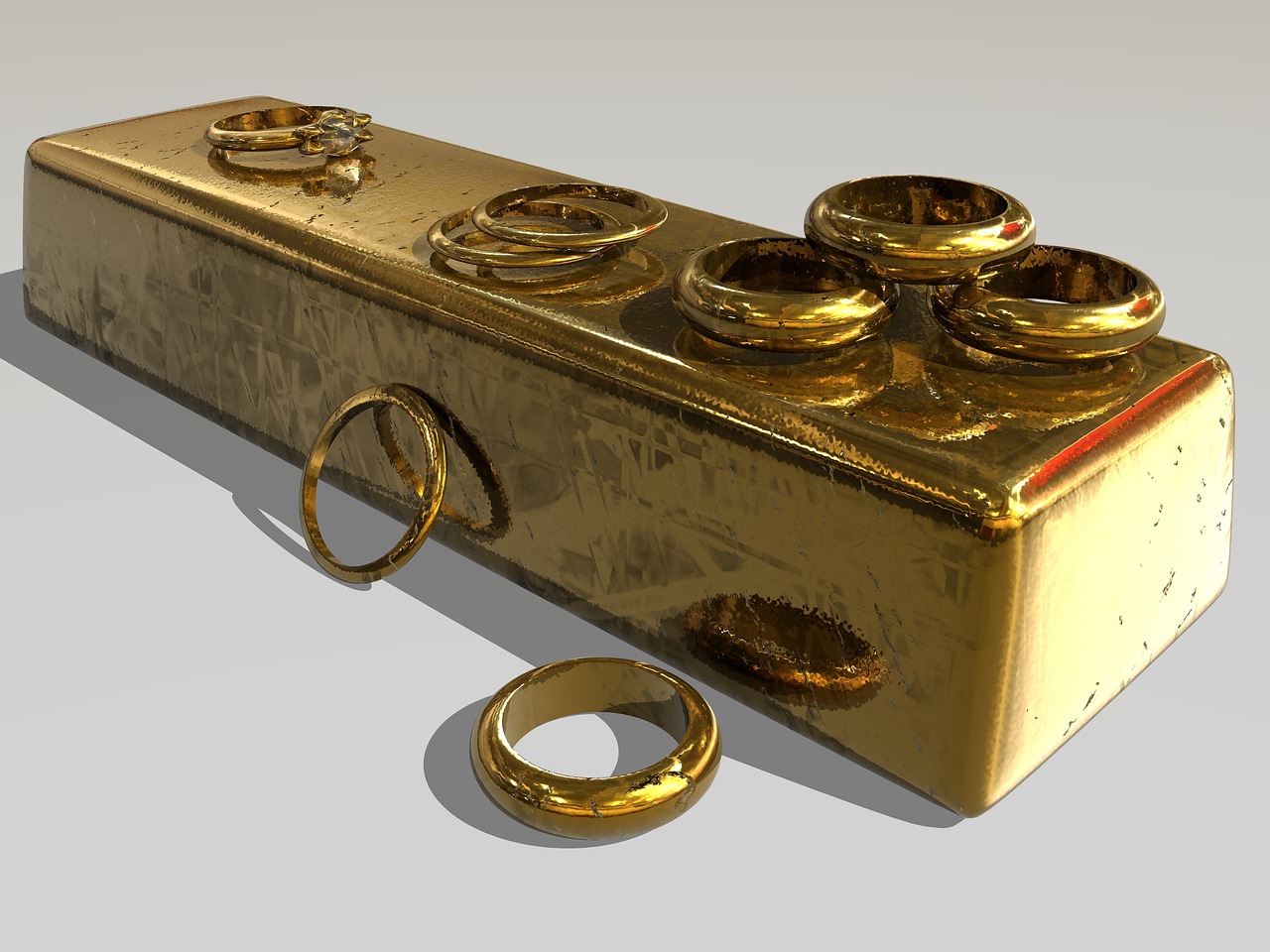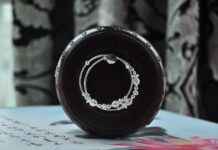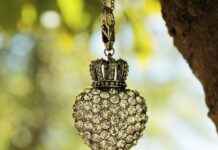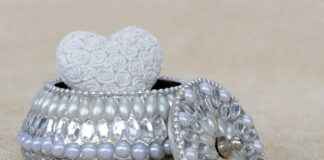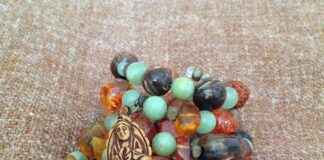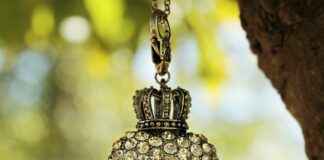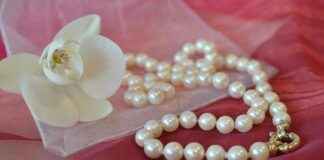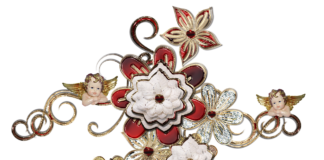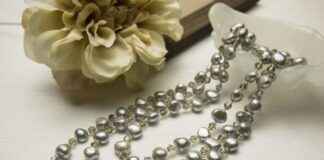This article delves into the world of luxury jewelry, specifically focusing on . These exquisite pieces are not just adornments; they carry unique features, significant historical importance, and fascinating stories that contribute to their immense value.
The Record-Breaking Auction Prices
Over the years, certain necklaces have achieved astonishing auction prices, capturing the attention of collectors and investors alike. For instance, the Pink Star Diamond Necklace made headlines when it sold for an incredible sum, setting a new benchmark in the auction world. The allure of these pieces often lies in their rarity and the craftsmanship involved in their creation.
Historical Significance of Iconic Necklaces
Many of the most sought-after necklaces have rich histories that enhance their value. The Hope Diamond Necklace, for example, is steeped in legend and has changed hands among notable owners throughout history. Each previous owner adds a layer of intrigue and significance, making the necklace even more desirable.
Myths and Legends Surrounding the Hope Diamond
The Hope Diamond is surrounded by numerous myths, including tales of a curse that purportedly haunts its owners. These stories not only heighten its mystique but also contribute to its high auction prices.
Previous Owners and Their Impact
Famous figures like King Louis XIV and actress Elizabeth Taylor have owned the Hope Diamond, and their connections to the necklace have significantly increased its historical value.
Factors Influencing Necklace Auction Prices
- Rarity and Uniqueness: The materials and design play a crucial role in determining the auction value of a necklace.
- Market Trends and Demand: Shifts in market demand can greatly affect auction results for high-value necklaces.
Famous Auction Houses and Their Role
Prominent auction houses like Sotheby’s and Christie’s are key players in the luxury auction market. Their strategies for attracting high-profile sales are essential for setting record prices.
Celebrity Ownership and Its Impact on Value
Celebrity ownership can significantly boost the desirability and auction prices of necklaces. Iconic pieces owned by stars often attract intense interest from collectors.
Future Trends in Necklace Auctions
Looking ahead, trends such as the rise of sustainable jewelry and technological innovations in auction processes are expected to shape the future of high-value necklace sales.
In conclusion, the world of expensive necklaces at auction is a fascinating blend of history, luxury, and market dynamics. Understanding the factors that contribute to their value can provide valuable insights for collectors and enthusiasts alike.
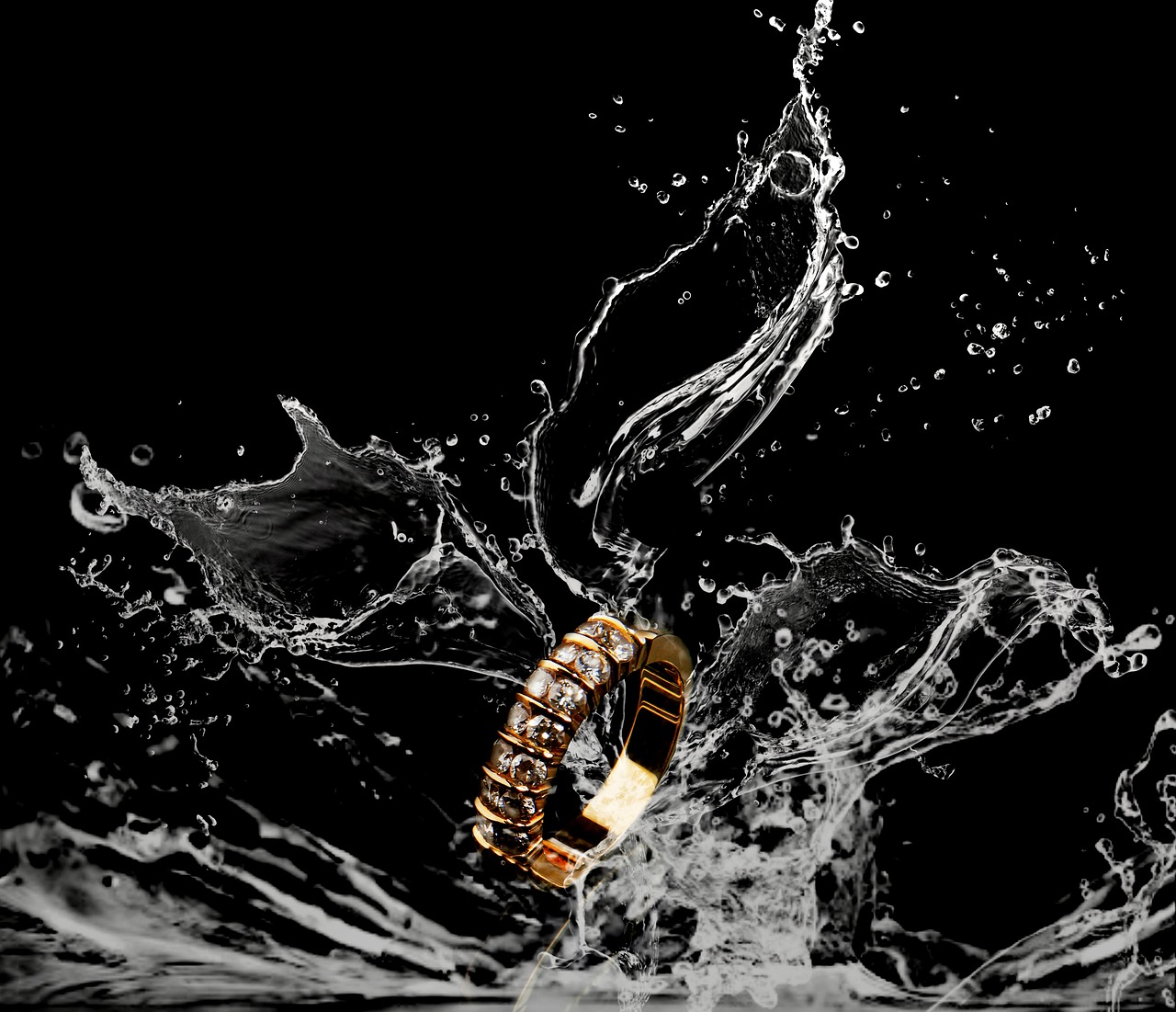
The Record-Breaking Auction Prices
In the world of luxury jewelry, few items capture the imagination quite like necklaces that have achieved record-breaking prices at auction. These extraordinary pieces not only showcase exquisite craftsmanship but also embody rich histories and stories that enhance their allure. Many collectors and investors eagerly anticipate these auctions, where stunning necklaces often command astonishing prices that leave spectators in awe.
One of the most notable examples is the Pink Star Diamond Necklace, which made headlines when it sold for an astounding $71.2 million at a Sotheby’s auction. This breathtaking piece features a rare, flawless pink diamond weighing 59.60 carats, making it one of the most coveted diamonds in the world. Its sale not only broke records but also set a new benchmark for the value of colored diamonds in the auction market.
Another remarkable necklace is the Hope Diamond Necklace, which has a storied past filled with legends and intrigue. This stunning piece, known for its deep blue hue, has changed hands numerous times throughout history, with its value skyrocketing due to its association with royalty and notable figures. At auction, it has fetched prices that reflect both its beauty and the captivating tales surrounding its previous owners.
As collectors and enthusiasts continue to seek out these exceptional necklaces, the auction prices are likely to rise. Factors such as rarity, historical significance, and market demand play crucial roles in determining the final bid. For instance, necklaces adorned with unique gemstones or those with a fascinating provenance often attract higher bids, as buyers are not just purchasing a piece of jewelry but also a slice of history.
In conclusion, the world of high-value necklace auctions is a captivating arena where astonishing prices are achieved, reflecting the unique qualities and stories behind each piece. As we look to the future, it will be exciting to see how these trends evolve and what new records will be set.
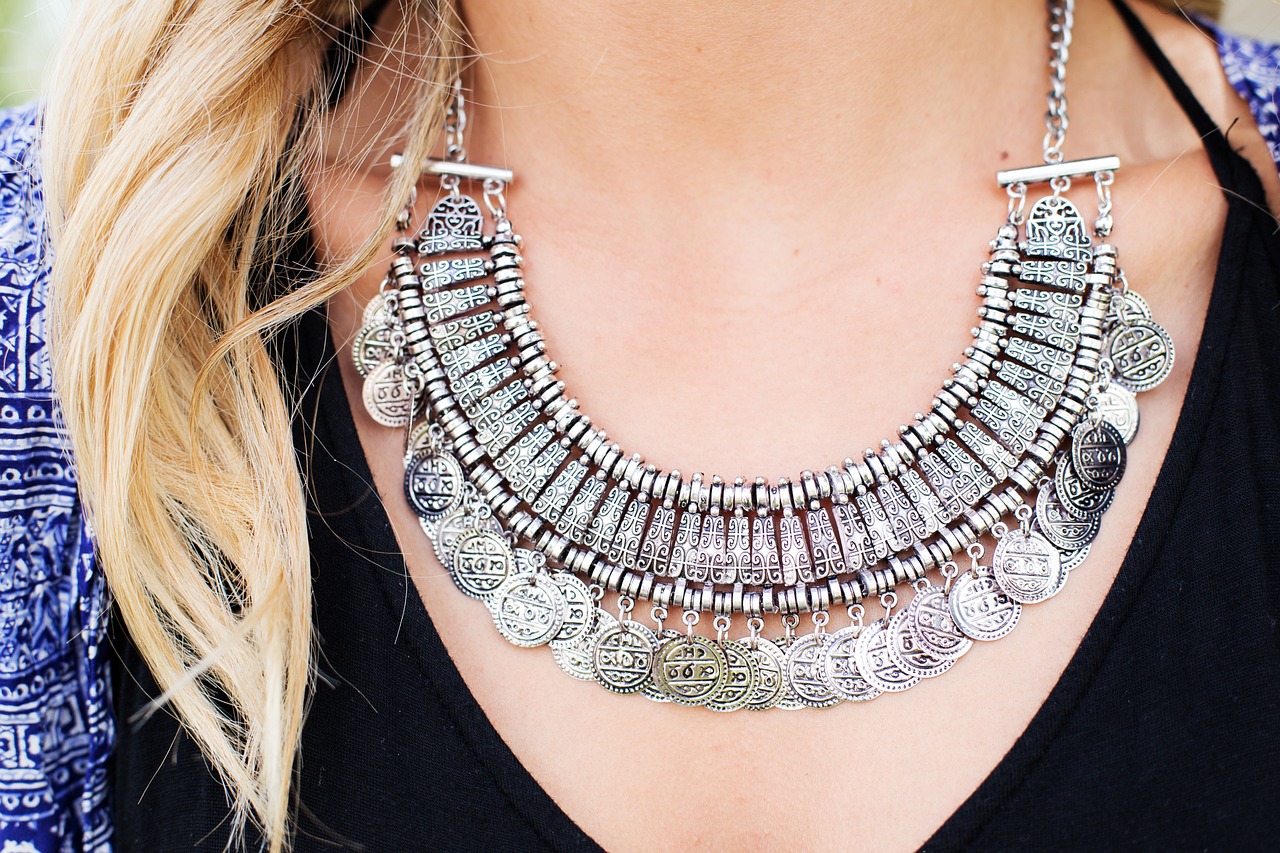
Historical Significance of Iconic Necklaces
The historical significance of iconic necklaces is a captivating subject that intertwines art, culture, and the stories of their previous owners. Each necklace carries with it a unique narrative that enhances its value in the auction market. Understanding these narratives can provide insight into why certain pieces command astonishing prices.
Many of the most celebrated necklaces have origins that date back centuries, often linked to influential figures or significant events. For instance, necklaces that belonged to royalty or were crafted for historical celebrations often carry a premium due to their cultural heritage and the stories they tell. The craftsmanship involved in creating these pieces also plays a crucial role in their historical significance, with intricate designs that reflect the artistic styles of their respective eras.
- Previous Ownership: The provenance of a necklace can dramatically impact its auction value. Items once owned by famous personalities, such as celebrities or historical figures, tend to attract more attention and higher bids. This is because collectors are not only purchasing a piece of jewelry but also a slice of history.
- Artistic Value: Necklaces that showcase exceptional artistry or unique materials often stand out in the auction world. For instance, pieces with rare gemstones or those created by renowned jewelers are highly sought after.
- Market Trends: The popularity of certain styles or periods can fluctuate, influencing the perceived value of necklaces. Understanding current trends can provide insights into which pieces may become more valuable over time.
In conclusion, the historical significance of iconic necklaces is multifaceted, encompassing their origins, craftsmanship, and previous ownership. As collectors delve into the stories behind these exquisite pieces, they not only appreciate their beauty but also the rich tapestry of history that accompanies them. This understanding is crucial for anyone looking to invest in or appreciate the world of high-value necklaces at auction.
The Hope Diamond Necklace
The Hope Diamond Necklace is not just a piece of jewelry; it is a symbol of mystery, beauty, and history that has captivated the imagination of many for centuries. This stunning necklace features a deep blue diamond, known for its extraordinary color and size, weighing an impressive 45.52 carats. Its allure is further heightened by the rich tapestry of stories and legends that surround it.
Originally mined in India, the Hope Diamond has a tumultuous history that includes tales of curses and misfortune for its owners. It was first owned by King Louis XIV of France, who acquired it in the late 17th century. After a series of ownership changes, including the infamous socialite Evalyn Walsh McLean, the diamond eventually found its way to the Smithsonian Institution, where it continues to be displayed as one of the most famous gemstones in the world.
The staggering auction prices associated with the Hope Diamond Necklace can be attributed to several factors. First and foremost is its rarity; blue diamonds are among the rarest gemstones on the planet. Furthermore, the necklace’s historical significance adds immense value. Each previous owner has contributed to its legend, making it not just a piece of jewelry but a piece of history.
Additionally, the myths and legends surrounding the Hope Diamond enhance its mystique. Many believe that the diamond carries a curse, bringing misfortune to those who possess it. This notion has only fueled public fascination and increased its desirability among collectors.
In conclusion, the Hope Diamond Necklace stands as a testament to the intersection of beauty, history, and human intrigue. Its captivating past and the stories of its previous owners contribute to its staggering auction price, ensuring that it remains a coveted piece for collectors and a source of fascination for the general public.
Myths and Legends Surrounding the Hope Diamond
The Hope Diamond is not just a stunning gemstone; it is also steeped in a rich tapestry of myths and legends that have contributed to its mystique and allure throughout history. These stories, often embellished over time, have captivated the imaginations of many and added layers of intrigue to this remarkable jewel.
- The Curse of the Hope Diamond: One of the most notorious legends surrounding the Hope Diamond is its alleged curse. It is said that anyone who possesses the diamond will face misfortune and tragedy. This myth gained traction after a series of unfortunate events befell several of its owners, including the infamous jeweler Harry Winston, who donated it to the Smithsonian Institution.
- Origins in India: The diamond is believed to have originated from the Golconda mines in India, where it was initially part of a larger stone. The story goes that it was stolen from a Hindu temple, leading to its association with bad luck and divine retribution.
- Royal Connections: Throughout its history, the Hope Diamond has been linked to various royal figures, including Louis XIV of France, who wore it as a symbol of power and wealth. Legends suggest that its beauty enchanted many, but also brought misfortune to those who wore it.
- Transformation into a Blue Gem: The diamond’s striking blue color is also the subject of legend. Some say it reflects the tears of the goddess of love, while others believe it holds the essence of the ocean, making it a symbol of both beauty and danger.
These myths and legends surrounding the Hope Diamond not only enhance its historical significance but also contribute to its status as one of the most famous jewels in the world. Each story adds a layer of complexity and fascination, ensuring that the Hope Diamond remains a subject of interest for gem enthusiasts and historians alike.
Previous Owners and Their Impact
The Hope Diamond is not just a stunning piece of jewelry; it is a treasure trove of history, intrigue, and mystery. Its past owners have each contributed unique narratives that enhance the diamond’s allure and historical significance. Understanding these notable figures and their connections to the Hope Diamond provides a deeper appreciation for its value.
One of the earliest known owners of the Hope Diamond was King Louis XIV of France, who acquired it in the late 17th century. Known as the “Blue Diamond of the Crown,” it adorned the royal collection and became a symbol of wealth and power. Louis XIV’s extravagant lifestyle and the political turbulence of his reign added a layer of drama to the diamond’s history.
After the French Revolution, the diamond passed through various hands, including that of Lord Francis Hope, a British nobleman who owned the diamond in the late 19th century. His financial struggles led to the sale of the diamond, which was then purchased by Evalyn Walsh McLean, an American socialite. McLean’s ownership is particularly fascinating; she was known for her lavish lifestyle and is rumored to have worn the diamond frequently, despite the curses associated with it. Her life was marked by personal tragedies, which only fueled the diamond’s mystique.
The Hope Diamond eventually found its way to the Smithsonian Institution, where it remains a centerpiece of their gem collection. The stories of its previous owners not only highlight their individual lives but also reflect broader historical contexts, enhancing the diamond’s narrative and value.
In summary, the Hope Diamond’s journey through the hands of notable figures has imbued it with a rich tapestry of stories that significantly enhance its historical value. Each owner has left an indelible mark on the diamond, transforming it from a mere gemstone into a symbol of human experience and emotion.
The Pink Star Diamond Necklace
The Pink Star Diamond Necklace is not just a piece of jewelry; it is a symbol of luxury and exclusivity that has captured the attention of collectors and enthusiasts worldwide. This extraordinary necklace features a stunning pink diamond, weighing an impressive 59.60 carats, which is renowned for its vivid color and exceptional clarity.
Originally cut and polished in 2003, the Pink Star diamond was later set into a necklace that showcases its beauty and rarity. In April 2017, this magnificent piece made headlines when it was sold at auction for a staggering $71.2 million, setting a record for the most expensive diamond ever sold. The auction took place at Sotheby’s in Hong Kong, where bidders from around the globe competed fiercely for the chance to own this masterpiece.
What makes the Pink Star Diamond Necklace truly unique is not just its price but its history. The diamond itself was mined from South Africa and is classified as a fancy vivid pink, a designation that signifies its exceptional color quality. This classification is rare among diamonds, contributing significantly to its auction value.
Furthermore, the necklace is a testament to the artistry of the jeweler who crafted it. The design features a combination of white diamonds that beautifully complement the pink diamond, enhancing its allure. Each diamond is meticulously placed to maximize brilliance and sparkle, showcasing the craftsmanship that goes into high-end jewelry.
In summary, the Pink Star Diamond Necklace is a remarkable piece that not only broke records but also embodies the pinnacle of luxury and craftsmanship. Its sale price reflects the growing demand for rare and unique pieces in the auction market, and it continues to be a subject of fascination for jewel enthusiasts and collectors alike.
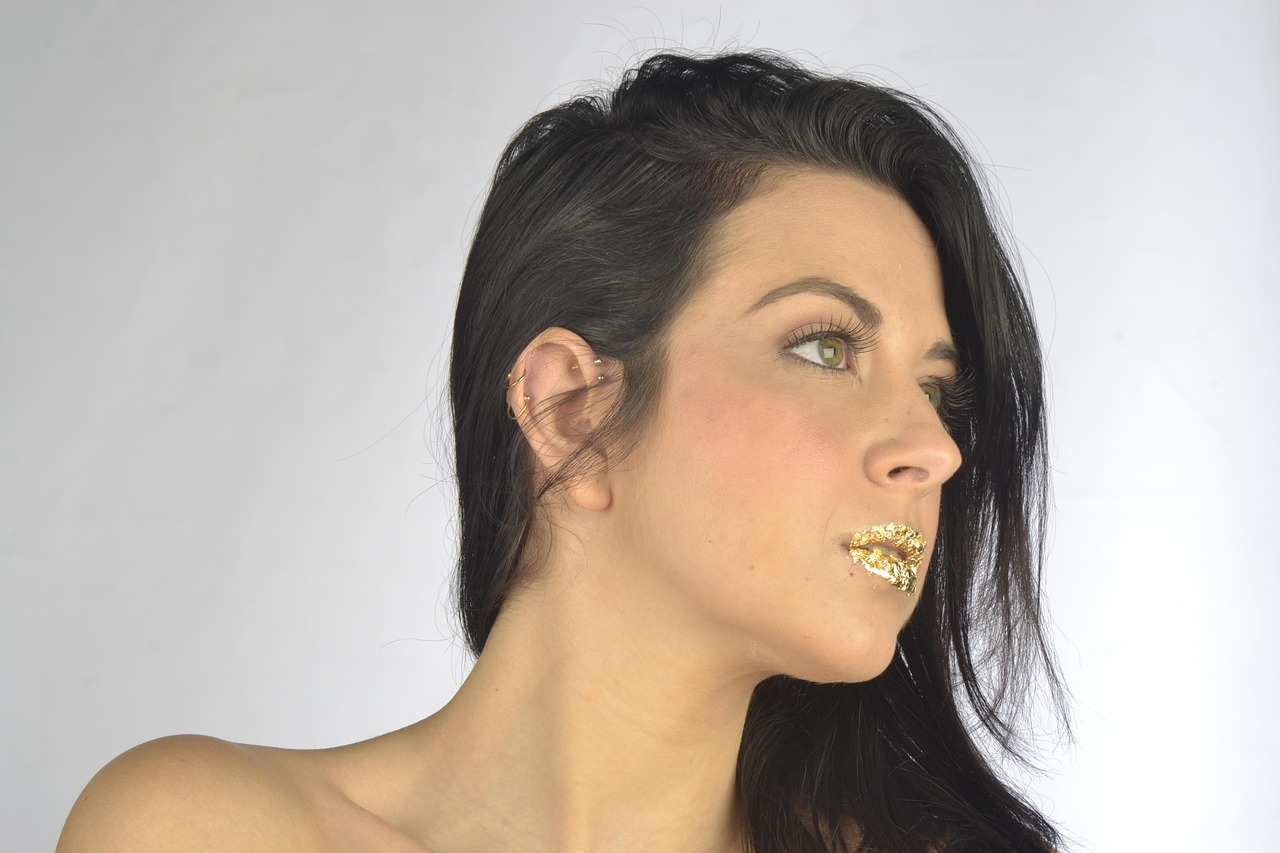
Factors Influencing Necklace Auction Prices
The auction prices of necklaces are influenced by a multitude of factors that collectively determine their market value. Understanding these factors is essential for collectors, investors, and enthusiasts alike.
- Rarity and Uniqueness: The rarity of a necklace significantly impacts its auction price. Unique designs, limited editions, or the use of rare materials, such as exotic gemstones or precious metals, can elevate a necklace’s perceived value. For instance, necklaces featuring historically significant stones or those crafted by renowned artisans often fetch higher prices due to their scarcity.
- Craftsmanship: The level of craftsmanship involved in creating a necklace plays a crucial role in determining its auction price. Intricate designs, meticulous attention to detail, and the skill of the jeweler can significantly enhance a necklace’s value. Pieces that showcase exceptional artistry or innovative techniques are highly sought after in the auction market.
- Market Demand: The dynamics of market demand also heavily influence auction prices. Trends in fashion, celebrity endorsements, and the overall economic climate can affect how much buyers are willing to pay. For example, during periods of high demand for vintage or antique jewelry, prices can soar as collectors compete for rare finds.
- Historical Significance: Necklaces with a rich historical background or those previously owned by famous figures often command higher auction prices. The story behind a piece can add to its allure, making it more desirable to collectors who value provenance.
- Condition: The condition of a necklace is paramount in determining its auction value. Well-preserved pieces that show minimal wear and tear are more appealing to buyers, while those in poor condition may see their values diminished.
In conclusion, the auction prices of necklaces are shaped by a complex interplay of rarity, craftsmanship, market demand, historical significance, and condition. Understanding these factors can provide valuable insights for anyone looking to buy or sell high-value necklaces in the auction market.
Rarity and Uniqueness
When it comes to the world of luxury jewelry, the rarity and uniqueness of materials and design play a crucial role in determining the perceived value of a necklace at auction. These factors not only enhance the aesthetic appeal of a necklace but also contribute significantly to its market value.
One of the primary reasons that certain necklaces command astonishing prices is the scarcity of materials used in their creation. For instance, diamonds, particularly those that are colored or of exceptional clarity, are often found in limited quantities. The Pink Star Diamond Necklace, which fetched a record price at auction, exemplifies this concept. The unique pink hue of the diamond, combined with its size and quality, made it a rare find that collectors were eager to acquire.
Moreover, the craftsmanship involved in designing a necklace can also elevate its value. Artisans who employ intricate techniques or innovative designs create pieces that stand out in the market. For example, necklaces that incorporate both traditional craftsmanship and modern design elements often attract higher bids at auctions. This blend of old and new not only appeals to collectors but also adds a layer of historical significance to the piece.
In addition to materials and craftsmanship, the design itself can be a defining factor. Unique designs that tell a story or reflect a particular artistic movement tend to resonate with buyers. A necklace that embodies a specific cultural heritage or historical period can see its value increase dramatically, as collectors are often willing to pay a premium for pieces that have a rich narrative.
Ultimately, the perceived value of a necklace at auction is a complex interplay of rarity, craftsmanship, and design. Collectors and investors alike understand that these factors not only enhance the beauty of a piece but also signify its worth in the competitive auction market.
Market Trends and Demand
The auction results of high-value necklaces are significantly influenced by market trends and buyer demand. Understanding these factors is crucial for collectors and investors alike, as they can make informed decisions when participating in auctions.
Market trends reflect the broader economic conditions and consumer preferences that shape buying behaviors. For instance, during periods of economic prosperity, collectors are more likely to invest in luxury items, leading to higher auction prices. Conversely, in times of economic uncertainty, demand may wane, causing prices to drop. This cyclical nature of demand can affect the auction outcomes of necklaces.
Additionally, the rarity and uniqueness of a necklace play a pivotal role in its desirability. Limited-edition pieces or those with historical significance often attract more attention, driving up their auction prices. Buyers are willing to pay a premium for items that are not only beautiful but also have a compelling story or provenance.
Another important aspect is the influence of social media and celebrity endorsements. In today’s digital age, a necklace worn by a high-profile celebrity can quickly become a trending item, spurring increased buyer interest and higher bids at auction. This phenomenon underscores the power of celebrity culture in shaping market demand.
Furthermore, the rise of online auctions has transformed how buyers engage with the market. Virtual platforms allow for a wider audience reach, enabling bidders from around the world to participate in auctions. This increased accessibility can lead to heightened competition and, consequently, higher final sale prices.
In conclusion, the interplay between market trends and buyer demand is a dynamic force in the auction world of high-value necklaces. By staying informed about these trends, collectors can better navigate the auction landscape, ensuring they make strategic investments in their collections.

Famous Auction Houses and Their Role
In the world of luxury jewelry, auction houses play a pivotal role in facilitating the sale of high-value items, particularly expensive necklaces. These prestigious establishments not only provide a platform for buyers and sellers but also significantly influence the overall auction market. This article delves into the prominent auction houses that specialize in exquisite jewelry, highlighting their impact and the strategies they employ to attract collectors and investors.
Leading Auction Houses: Sotheby’s and Christie’s
Among the most recognized names in the auction industry are Sotheby’s and Christie’s. These auction houses have established themselves as leaders in the luxury market, hosting some of the most significant sales of expensive necklaces. Their reputation is built on decades of expertise, a vast network of high-net-worth clients, and a commitment to excellence in service.
Strategies for Attracting High-Profile Sales
- Expert Curation: Both Sotheby’s and Christie’s employ expert curators who understand the intricacies of jewelry valuation, ensuring that only the finest pieces are presented to buyers.
- Global Reach: These auction houses have a global presence, allowing them to attract international buyers and sellers, which enhances the competition and ultimately drives up prices.
- Exclusive Events: They often host exclusive preview events, allowing potential buyers to view and appreciate the pieces before the auction, creating a sense of urgency and excitement.
Innovative Marketing Techniques
In today’s digital age, traditional marketing methods are evolving. Auction houses are leveraging digital platforms and social media to reach a broader audience. By showcasing high-value necklaces through online galleries and virtual auctions, they cater to a new generation of collectors. This approach not only increases visibility but also enhances engagement with potential buyers.
The Impact on the Auction Market
The influence of these prominent auction houses extends beyond individual sales. Their ability to set trends and establish benchmarks for pricing significantly affects the auction market as a whole. When a necklace sells for a record price, it can lead to increased interest and higher valuations for similar pieces, creating a ripple effect throughout the industry.
In conclusion, the role of famous auction houses like Sotheby’s and Christie’s is crucial in shaping the landscape of the luxury jewelry market. Through expert curation, innovative marketing, and a global reach, they not only facilitate the sale of expensive necklaces but also impact the overall auction market dynamics.
Sotheby’s and Christie’s: Leaders in Luxury Auctions
Sotheby’s and Christie’s are two of the most renowned names in the luxury auction market, each playing a pivotal role in shaping the landscape of high-value sales. Their influence extends beyond mere transactions; they are key players in the art and jewelry world, attracting affluent collectors and investors alike.
Both auction houses have developed strategies that cater to the tastes and preferences of high-profile clients. One of the primary tactics employed by Sotheby’s and Christie’s is the curation of exclusive events. These events not only showcase rare pieces but also create an atmosphere of prestige and exclusivity that appeals to wealthy buyers. By inviting select clients to private viewings and gala auctions, they foster a sense of community and belonging among elite collectors.
Moreover, both houses utilize cutting-edge marketing techniques to enhance visibility and desirability. This includes leveraging social media platforms, engaging with influencers, and producing high-quality promotional materials that highlight the unique features of auction items. For instance, Sotheby’s has embraced digital technology with online bidding platforms, allowing global participation in auctions, which significantly broadens their audience.
In addition, Christie’s has pioneered themed auctions that cater to specific interests, such as vintage jewelry or contemporary art. This targeted approach not only attracts niche collectors but also helps in creating a buzz around particular events, driving up competition and ultimately the sale price.
Both auction houses also emphasize the storytelling aspect of their items. By sharing the provenance and historical significance of each piece, they create a narrative that enhances its value in the eyes of potential buyers. This method not only justifies high prices but also deepens the emotional connection between the buyer and the item.
In conclusion, Sotheby’s and Christie’s continue to lead the luxury auction market through innovative strategies, exclusive events, and compelling narratives. Their ability to adapt to changing market dynamics while maintaining a focus on high-profile sales sets them apart as leaders in the industry.
Innovative Marketing Techniques
In the competitive world of high-value auctions, auction houses have adopted a variety of to promote luxurious necklaces and engage potential buyers. These strategies are not only aimed at increasing visibility but also at enhancing the overall auction experience for collectors and investors.
One primary technique is the use of digital marketing campaigns. Auction houses leverage social media platforms like Instagram and Facebook to showcase stunning visuals of the necklaces, often accompanied by captivating stories. By utilizing high-quality images and engaging content, they can create a buzz around upcoming auctions, attracting a wider audience.
Another effective method is the organization of exclusive preview events. These events allow potential buyers to view the necklaces up close, providing an opportunity to appreciate their craftsmanship and history. Such intimate gatherings not only foster a sense of exclusivity but also build relationships between the auction house and its clientele.
Collaborations with influencers and celebrities have also proven beneficial. By partnering with well-known figures in the fashion and luxury sectors, auction houses can tap into their followers, expanding their reach and credibility. This strategy often results in increased interest and higher bids during auctions.
Additionally, storytelling plays a crucial role in marketing high-value necklaces. Auction houses often highlight the unique narratives behind each piece, such as previous ownership by famous personalities or historical significance. This storytelling approach not only enhances the emotional value of the necklaces but also justifies their high auction prices.
Finally, the integration of technology into the auction process is transforming how necklaces are marketed. Virtual reality experiences and online bidding platforms allow collectors from around the world to participate in auctions, making it easier for them to acquire coveted pieces without geographical limitations.
In conclusion, the innovative marketing techniques employed by auction houses are essential for promoting high-value necklaces and engaging potential buyers. Through digital marketing, exclusive events, celebrity collaborations, storytelling, and technological advancements, these houses are not only enhancing their visibility but also reshaping the auction landscape.
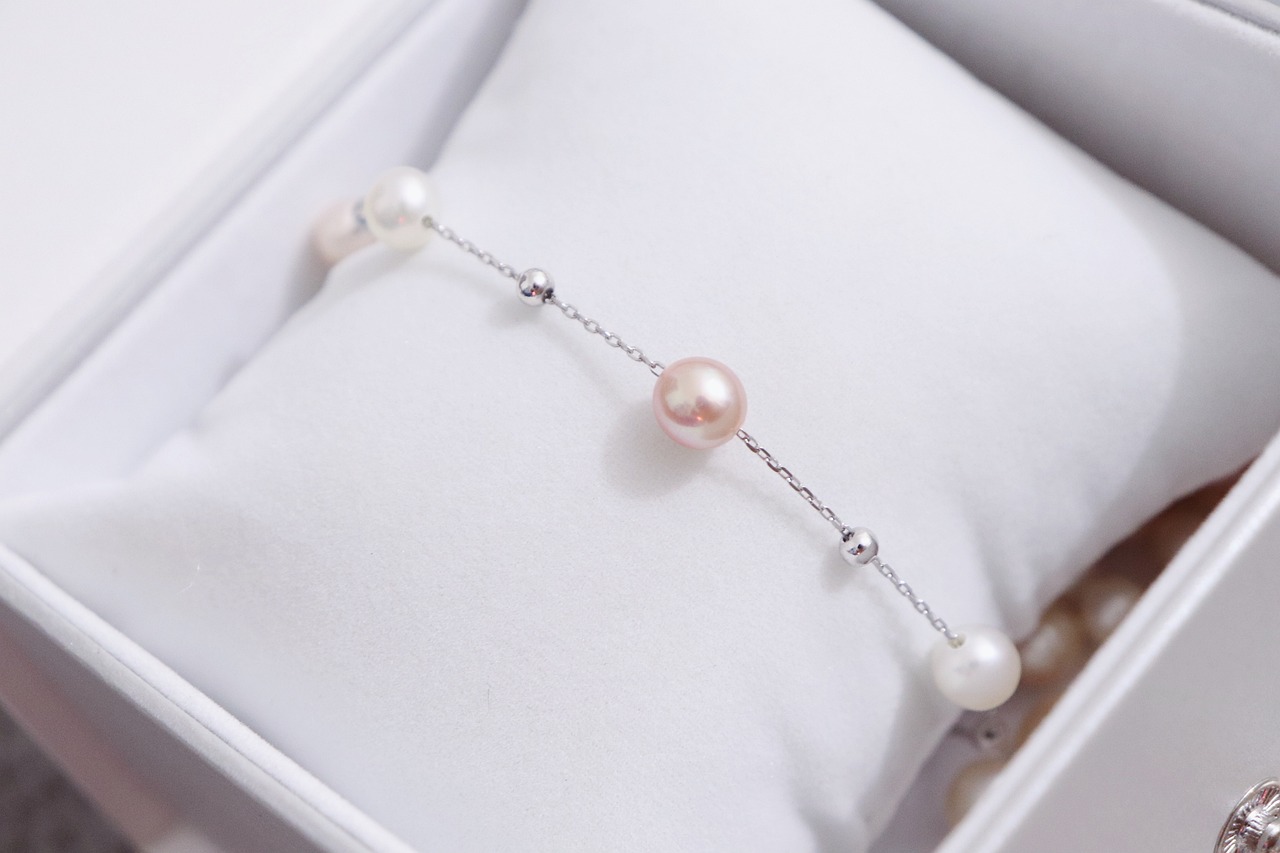
Celebrity Ownership and Its Impact on Value
The world of high-value jewelry auctions is significantly influenced by the ownership of pieces by celebrities. When a necklace is associated with a famous personality, its desirability and auction price can soar, transforming it from a mere accessory into a coveted artifact. This phenomenon can be attributed to several factors that intertwine celebrity culture with the jewelry market.
Iconic Celebrity Necklaces
- Princess Diana’s Sapphire Necklace: This stunning piece, worn by the beloved princess, fetched a remarkable price at auction, driven by her enduring legacy.
- Elizabeth Taylor’s Diamond Necklace: Known for her extravagant collection, Taylor’s jewelry pieces often command high prices, reflecting her iconic status.
- Rihanna’s Diamond Necklace: The pop star’s influence and fashion sense add immense value to any piece she wears, making her owned necklaces highly sought after.
The Influence of Celebrity Culture
Celebrity culture plays a pivotal role in shaping public perception of jewelry. When a necklace is owned by a well-known figure, it gains an aura of exclusivity and glamour. Collectors are not just purchasing a piece of jewelry; they are buying a piece of history and a connection to the celebrity’s life. This connection often leads to a bidding frenzy at auctions, as fans and collectors alike vie for ownership of these iconic pieces.
Additionally, the stories behind these necklaces—how they were acquired, the events they were worn to, and the significance they hold—further enhance their value. The more compelling the narrative, the higher the auction price tends to be. As a result, the interplay between celebrity ownership and market demand creates a unique dynamic that can elevate a necklace’s worth exponentially.
In conclusion, the impact of celebrity ownership on necklace auction prices is profound. As long as celebrity culture continues to thrive, necklaces associated with famous figures will remain highly desirable, driving auction prices to new heights.
Iconic Celebrity Necklaces
When it comes to luxury jewelry, few pieces capture the imagination quite like necklaces owned by celebrities. These iconic necklaces not only showcase exquisite craftsmanship but also carry fascinating stories and histories that enhance their value. Below are some of the most famous necklaces that have made headlines and fetched astonishing prices at auction.
- The Heart of the Ocean Necklace: Inspired by the blockbuster film *Titanic*, this stunning blue diamond necklace became a symbol of romance and tragedy. Although the original was a fictional piece, replicas have sold for millions, particularly due to their association with the film and its stars.
- The Cartier Necklace Worn by Elizabeth Taylor: Known for her extravagant jewelry collection, Elizabeth Taylor’s Cartier necklace, adorned with a stunning 33.19-carat diamond, sold for an incredible $8.8 million. Its historical significance and celebrity ownership made it a coveted piece among collectors.
- The Necklace of Princess Diana: This striking piece, featuring a unique combination of pearls and diamonds, was famously worn by Princess Diana. After her passing, it was auctioned off for over $1.5 million, reflecting both its beauty and the legacy of its former owner.
- The Van Cleef & Arpels Alhambra Necklace: This iconic necklace has been a favorite among many celebrities, including the likes of Kate Middleton. Its elegant design and luxurious materials have made it a sought-after piece, often fetching high prices at auctions.
- The Bulgari Necklace Worn by Audrey Hepburn: This exquisite piece, featuring a blend of emeralds and diamonds, was worn by the legendary actress in *Breakfast at Tiffany’s*. Its association with Hepburn has made it a timeless classic, with auction prices reflecting its iconic status.
These necklaces not only represent significant financial investments but also serve as cultural artifacts that tell stories of fame, fortune, and artistry. Their auction prices are often influenced by their celebrity connections, rarity, and historical significance, making them highly desirable among collectors and enthusiasts alike.
The Influence of Celebrity Culture
has become a significant factor in the world of luxury jewelry, particularly when it comes to necklaces. As celebrities frequently showcase their extravagant jewelry on red carpets and social media platforms, the perceived value of these pieces skyrockets. This phenomenon creates a ripple effect in the auction market, where necklaces once owned by famous individuals can command astonishing prices.
One of the primary reasons for this trend is the emotional connection that collectors and buyers feel towards celebrities. When a necklace is associated with a well-known figure, it becomes more than just an accessory; it transforms into a symbol of status and prestige. This emotional resonance can lead to bidding wars at auctions, where buyers are willing to pay a premium for a piece that they believe carries the aura of celebrity.
Additionally, the stories behind these necklaces often enhance their value. For instance, a necklace worn by a beloved actress at a significant event can be viewed as a piece of history. Collectors are not only purchasing a necklace but also a narrative that adds depth and allure to the item. This is particularly evident in auctions where items with rich backstories often outshine those that lack a notable provenance.
Furthermore, the role of social media cannot be overlooked. Platforms like Instagram and TikTok have enabled celebrities to showcase their jewelry to millions, instantly elevating the desirability of specific pieces. When a necklace goes viral, its auction price can increase dramatically, reflecting the power of celebrity endorsement in driving market trends.
In conclusion, the intersection of celebrity culture and luxury jewelry significantly impacts the perceived value of necklaces. As celebrities continue to influence consumer behavior, the auction market will likely witness ongoing fluctuations in prices, driven by the allure of ownership and the stories behind these exquisite pieces.
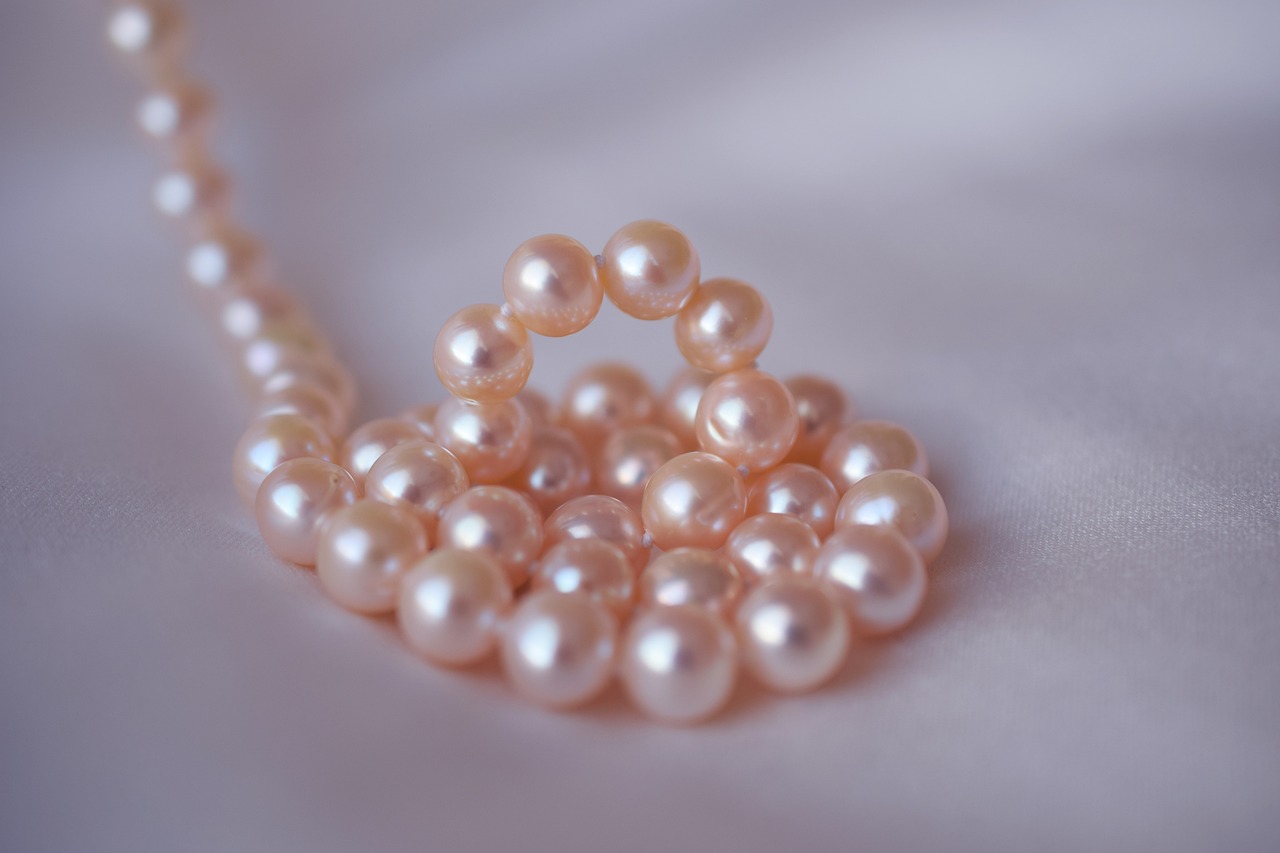
Future Trends in Necklace Auctions
As the world of luxury jewelry continues to evolve, the auction market for expensive necklaces is experiencing significant shifts. These changes are driven by various factors, including market dynamics, collector interests, and technological advancements. In this analysis, we will explore the potential future trends that could shape the auction landscape for high-value necklaces.
- The Shift Towards Sustainable Jewelry
In recent years, there has been a growing interest in sustainable and ethically sourced jewelry. Collectors are becoming increasingly aware of the environmental impact of their purchases. This trend is likely to influence auction prices, as necklaces made from sustainable materials may command higher bids due to their ethical appeal.
- Technological Innovations in Auctions
The rise of technology is transforming the auction experience. Online bidding platforms and virtual showcases are making it easier for collectors to participate in auctions from anywhere in the world. This increased accessibility may lead to a broader audience and potentially higher prices for rare necklaces.
- Changing Collector Demographics
The demographics of collectors are also shifting. Younger generations are entering the market with different tastes and preferences. As these new collectors prioritize unique designs and personal expression, auction houses may need to adapt their offerings to cater to these evolving interests.
- Increased Globalization
With the world becoming more interconnected, the auction market for expensive necklaces is likely to become increasingly globalized. This globalization can lead to diverse bidding wars as collectors from different regions compete for the same pieces, driving up prices and expanding the market.
In conclusion, the future of necklace auctions is poised for transformation. As sustainability, technology, and changing demographics influence the market, collectors and auction houses must stay attuned to these trends to navigate the evolving landscape effectively. The interplay of these factors will undoubtedly shape the auction prices and desirability of expensive necklaces in the years to come.
The Rise of Sustainable Jewelry
The jewelry industry is witnessing a significant shift towards sustainable and ethically sourced pieces. This growing interest is not just a passing trend but a movement that is reshaping consumer behavior and market dynamics. As more buyers become aware of the environmental and social implications of their purchases, the demand for jewelry that reflects these values continues to rise.
One of the primary drivers of this change is the increasing awareness of ethical sourcing. Consumers are now more informed about the origins of gemstones and metals, leading to a preference for brands that prioritize transparency in their supply chains. This shift is particularly evident among younger generations, who are more likely to invest in jewelry that aligns with their values. As a result, jewelry brands that adopt sustainable practices are not only appealing to a conscious consumer base but are also enhancing their brand reputation and loyalty.
Moreover, the impact of this trend on future auction prices could be profound. As sustainable jewelry gains traction, pieces that are certified as ethically sourced may see an increase in their auction value. Collectors are beginning to recognize the importance of provenance and ethical considerations, which could lead to a premium on sustainable pieces. This potential shift in valuation is supported by the growing number of auction houses that are starting to feature sustainable jewelry prominently in their catalogs.
| Factors Impacting Auction Prices | Traditional Jewelry | Sustainable Jewelry |
|---|---|---|
| Rarity | High | Increasing |
| Consumer Demand | Stable | Growing |
| Brand Reputation | Established | Emerging |
In conclusion, the rise of sustainable and ethically sourced jewelry is likely to have a lasting impact on the auction market. As consumer preferences continue to evolve, it is essential for collectors and investors to stay informed about these trends. The future of jewelry auctions may very well be shaped by the values of sustainability and ethics, potentially leading to higher prices for pieces that embody these principles.
Technological Innovations in Auctions
The landscape of auctions has undergone a remarkable transformation in recent years, largely due to advancements in technology. This evolution has not only changed how necklaces are bought and sold but also enhanced the overall experience for both buyers and sellers.
One of the most significant changes is the rise of online bidding platforms. These platforms allow participants from around the world to place bids in real-time, breaking geographical barriers and expanding the pool of potential buyers. This accessibility has led to increased competition, which often drives up the final sale prices of exquisite necklaces.
Additionally, virtual showcases have become a popular method for auction houses to display their high-value items. These digital exhibitions allow prospective buyers to view necklaces up close, often with 360-degree views and detailed descriptions. This level of transparency helps buyers feel more confident in their decisions, as they can assess the quality and craftsmanship of the pieces without being physically present.
| Technology Impact | Benefits |
|---|---|
| Online Bidding | Increased accessibility and competition |
| Virtual Showcases | Enhanced buyer confidence and engagement |
| Mobile Apps | Convenience of bidding from anywhere |
Moreover, mobile applications have emerged, allowing users to participate in auctions directly from their smartphones. This convenience means that collectors can bid on their favorite necklaces anytime and anywhere, making the auction process more dynamic and engaging.
In conclusion, the integration of technology in the auction landscape for necklaces is a game-changer. It not only improves accessibility and engagement but also offers a more transparent and efficient bidding process. As technology continues to advance, we can expect even more innovative solutions that will further enhance the auction experience.
Frequently Asked Questions
- What are the most expensive necklaces ever sold at auction?
Some of the most expensive necklaces include the Hope Diamond Necklace and the Pink Star Diamond Necklace, both of which fetched astonishing prices due to their unique features and historical significance.
- What factors influence the auction prices of necklaces?
Factors such as rarity, craftsmanship, market demand, and historical significance play a crucial role in determining the auction prices of necklaces. The uniqueness of materials and the story behind each piece can significantly enhance its value.
- How does celebrity ownership affect necklace values?
Celebrity ownership can dramatically increase a necklace’s desirability and auction price. When a famous figure owns a piece, it often attracts more attention and can lead to higher bids during auctions.
- Which auction houses are known for selling high-value necklaces?
Auction houses like Sotheby’s and Christie’s are leaders in the luxury auction market, known for their expertise in selling high-value necklaces and employing innovative marketing techniques to attract buyers.
- What future trends should we expect in necklace auctions?
Future trends may include a rise in sustainable and ethically sourced jewelry, as well as technological innovations like online bidding, which could change how auctions are conducted and how buyers engage with high-value pieces.

